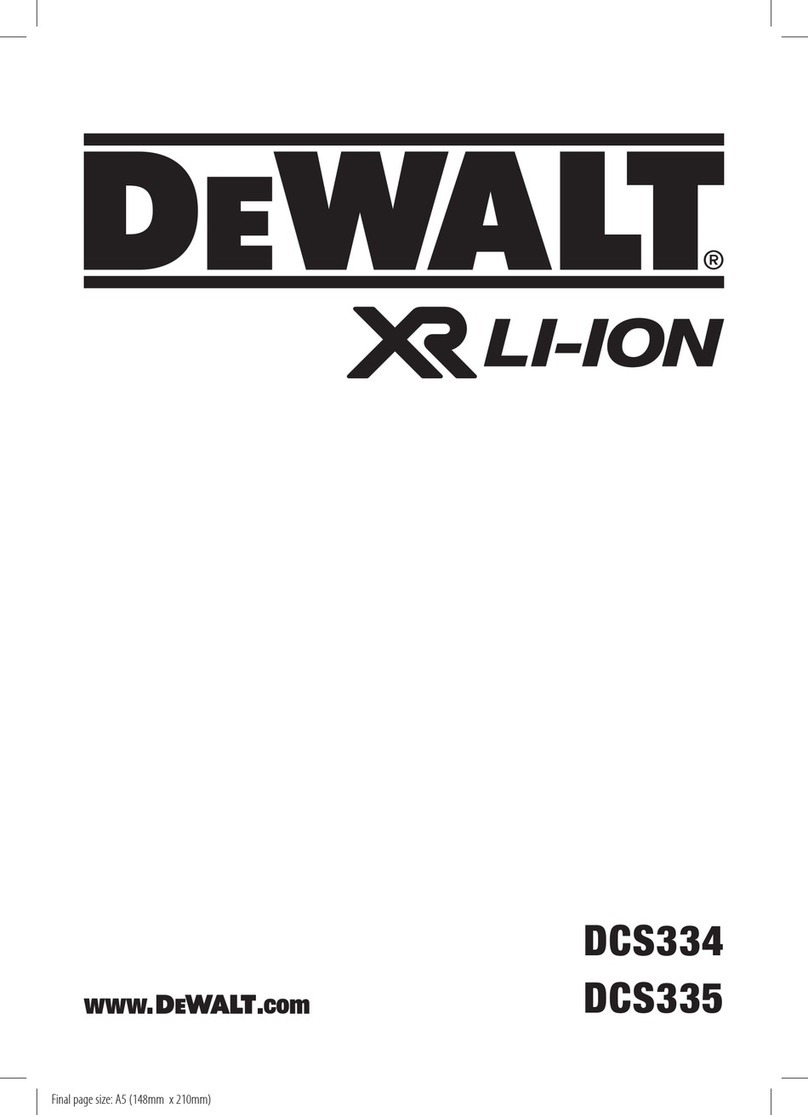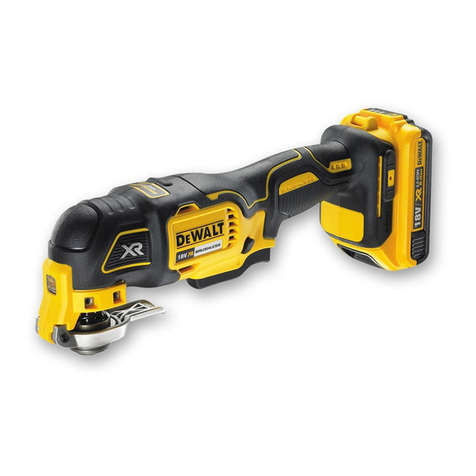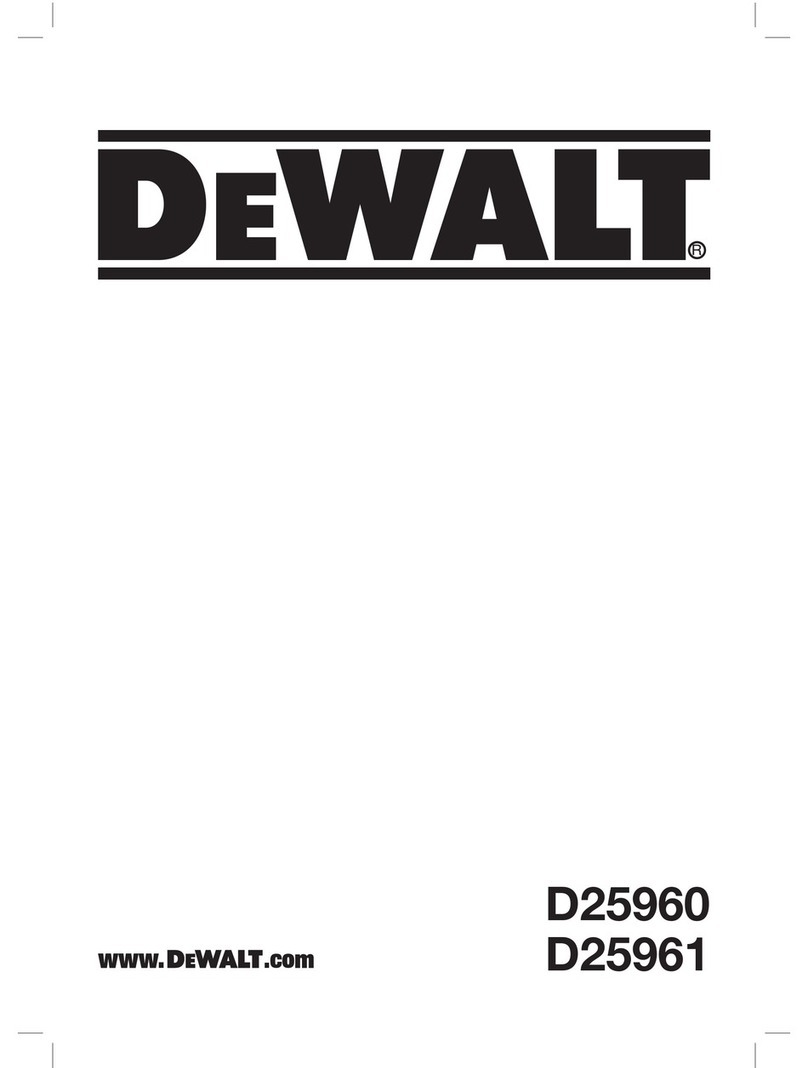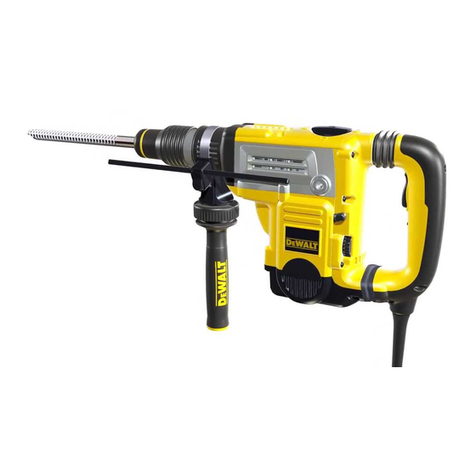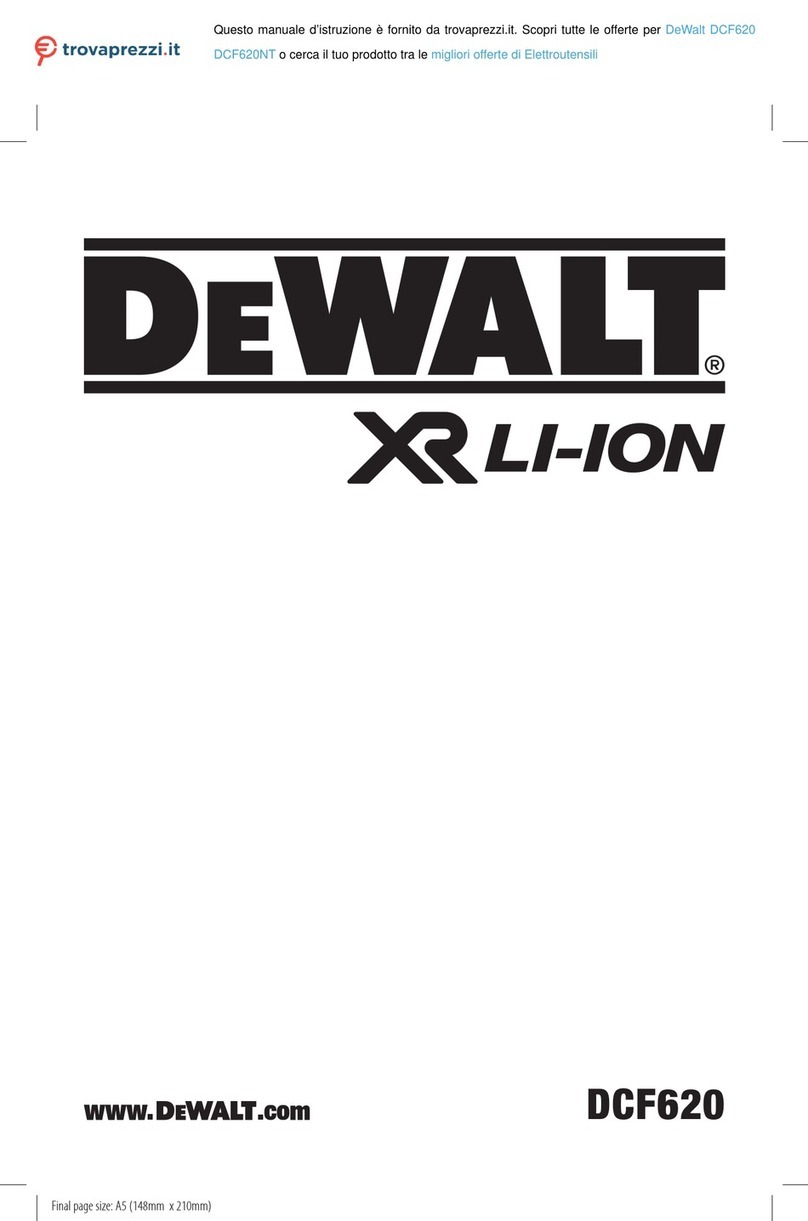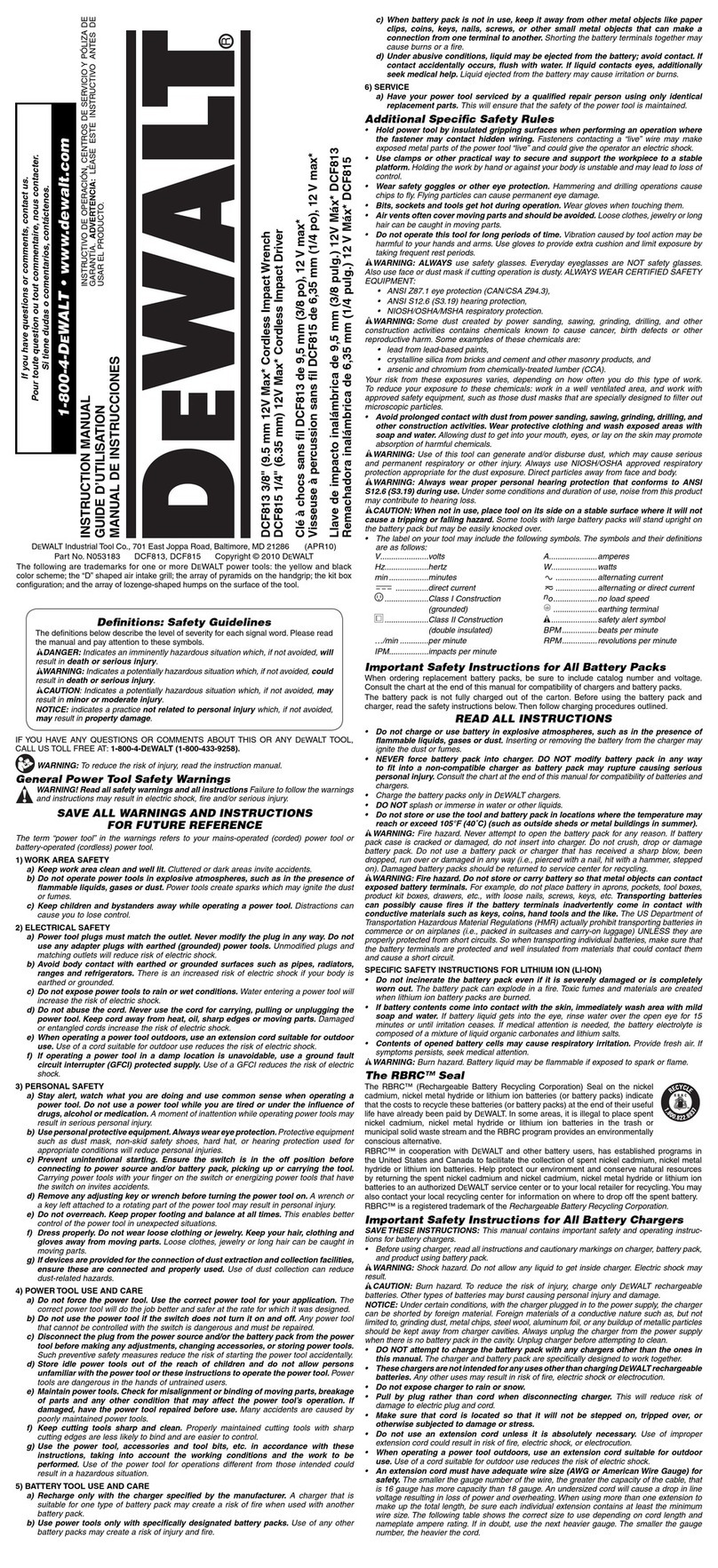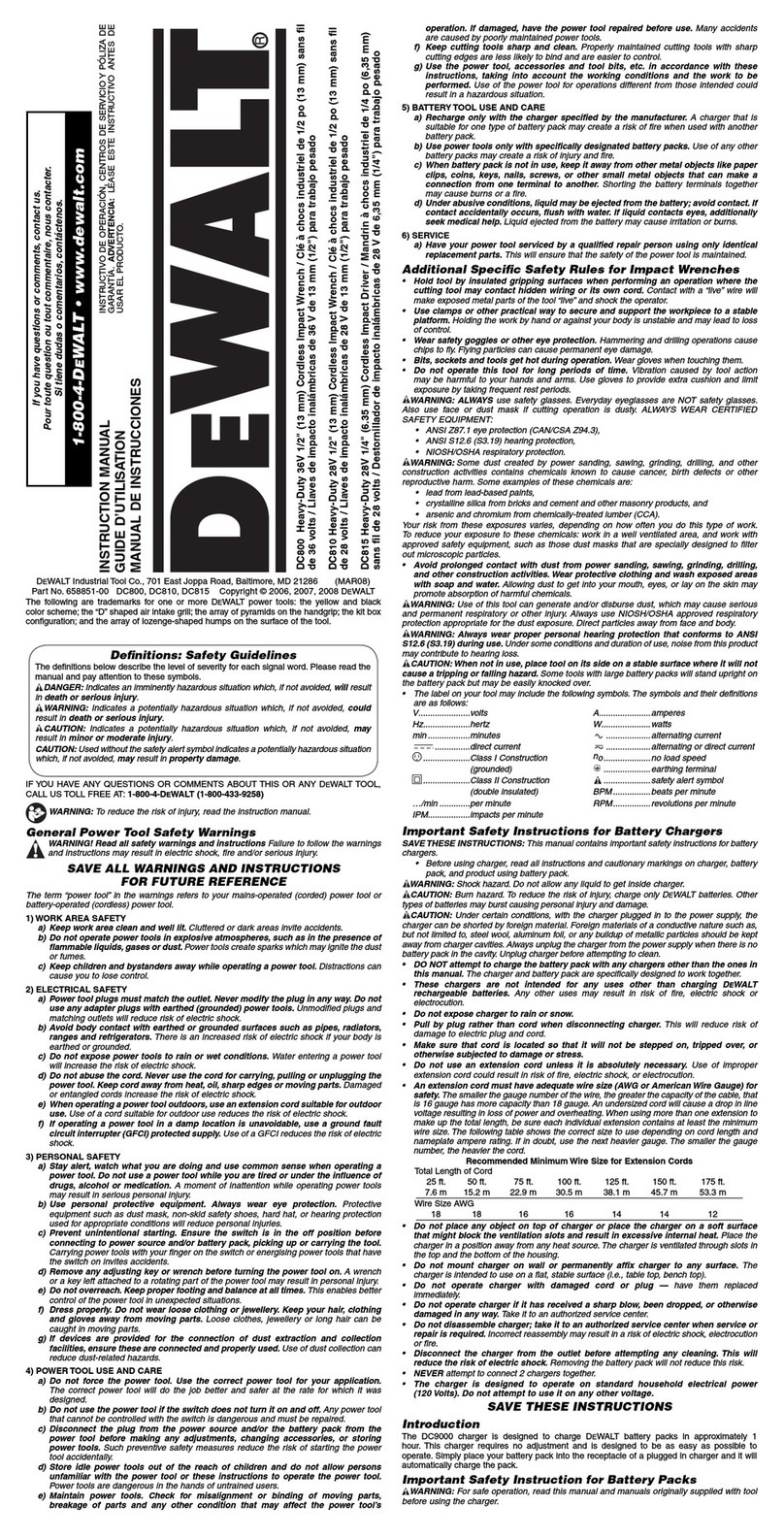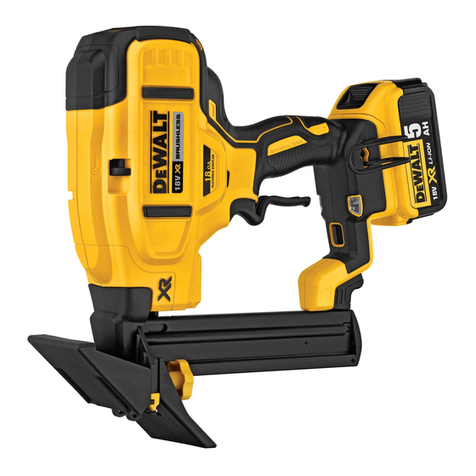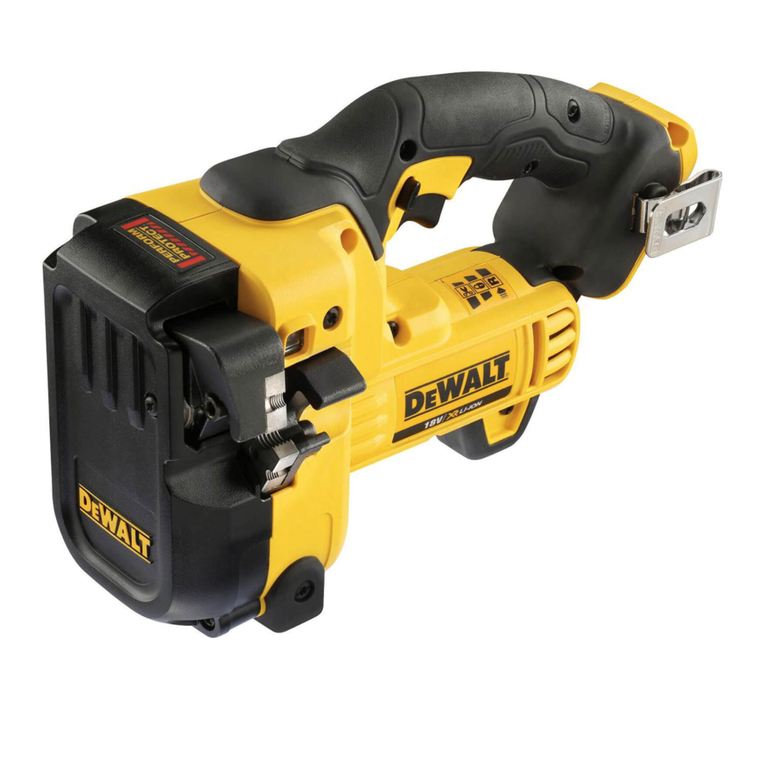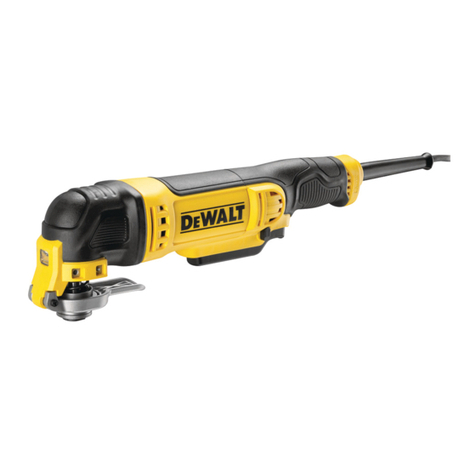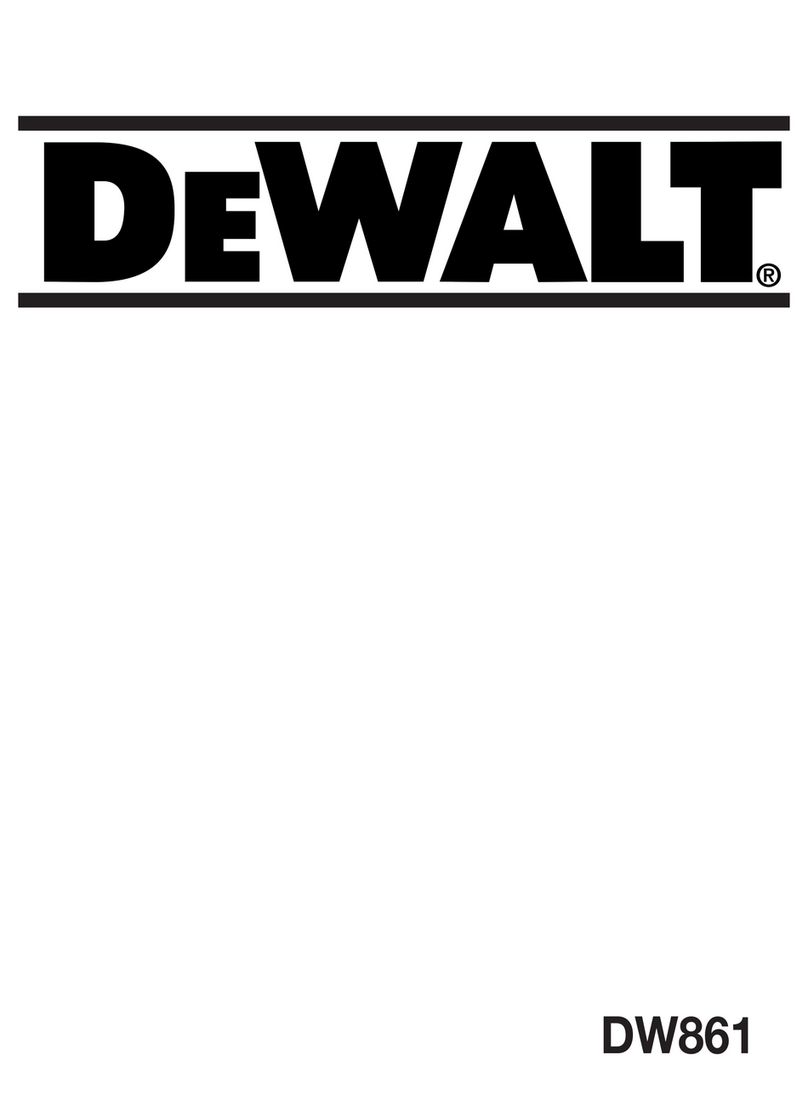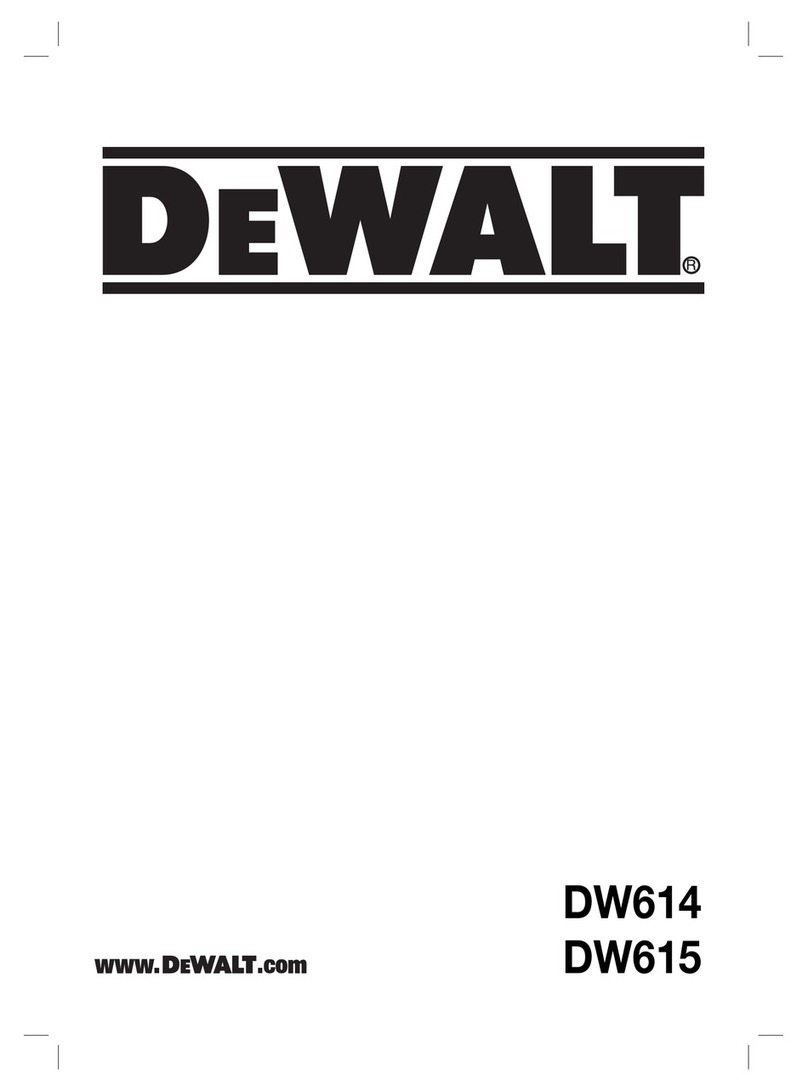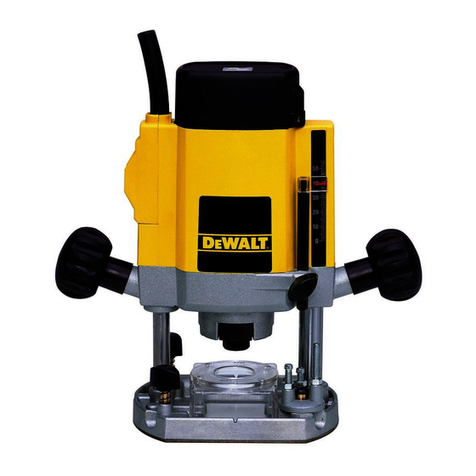
Model T1000 Cat. No. DDF211001P
T1000
5
unfired loads into a trash container.
6. To prepare for the next fastening, point the tool in a safe
direction. Snap the barrel forward as described in step 1.
This action will eject the spent powder load and properly
reset the piston. Always insert a new fastener before
loading powder load in the chamber. Do not attempt to
unload or disassemble a jammed, stuck or broken tool as
improper handling may cause it to discharge and strike
operator and/or bystander. A jammed tool must be pointed
in a safe direction at all times. Tag the tool and lock it
up. Call your DEWALT Fasteners representative for proper
assistance.
SAFETY INSTRUCTIONS
Safety is your primary responsibility when operating any powder
actuated tool. You must read and understand the contents of
this manual. You must be familiar with all functional and safety
requirements of the tool. It is your responsibility to obtain proper
training and a DEWALT Fasteners operator card prior to using this
tool in compliance with the current American National Standard
A10.3 Safety Requirements for Powder Actuated Fastening Systems
and the Federal Occupational Safety and Health Administration
Standards (OSHA). Existing state or local regulations should also
be followed. When using this tool, you must have the qualified
operators card in your possession.
Revocation of card - Failure to comply with any of the rules and
regulations for safe operation of powder actuated tools shall be
cause for the immediate revocation of your qualified operator card.
The following is a summary of safety precautions to be followed
when operating a DEWALT Fasteners powder actuated tool. Failure
to follow these safety instructions can result in serious injury or
death to operators or bystanders.
PRIOR TO OPERATING THE TOOL
1. Warning signs should always be posted within the area in which
a powder actuated tool is to be used. These signs should be at
least 8” x 10” in size with boldface type that is not less than 1”
in height. The sign should state “Powder Actuated Tool In Use”.
2. Approved safety goggles should always be worn by operator
or bystander, to protect their eyes from flying particles.
Hearing protection should always be worn by the operator and
bystanders when using a powder actuated tool. Other personal
safety protection as required should also be used.
3. Never modify or fabricate parts for use in your DEWALT tool. Use
only DEWALT Fasteners, loads, and tool parts.
4. Hands or other body parts must never be placed in front of
muzzle/barrel. Accidental discharge can cause piston and/or
fastener to pass through the operator’s hand.
5. Never compress the tool against any part of the body. Serious
injury or death may result in the event of an accidental discharge.
6. Always point tool in a safe direction at all times.
7. Use the tool for its intended purpose only.
PREPARATION FOR LOADING THE TOOL
1. Tools must be checked prior to operating to make sure
they are not fully or partially loaded with a powder load or
fastener.
2. To insure safe operation, perform the daily function test
described in this manual. Be sure the tool is not loaded prior to
performing this test.
3. Do not operate this tool unless all its parts are in place
and operating appropriately. Never attempt to use a
malfunctioning tool. Call 1-800-4-DEWALT for assistance.
4. Never guess about the suitability of a base material. If
you are uncertain about the suitability of a base material,
perform a center punch test.
5. Do not operate the tool until you learn and understand the
color code / numbering system used to identify the power
level of powder loads.
OPERATING THE TOOL
1. Only use fasteners and powder loads designed for this tool as
supplied by DEWALT Fasteners.
2. Do not use pow der actuated tools in a flammable or an explosive
atmosphere.
3. Do not fire a tool without a fastener. The piston will impact the
work surface possibly causing serious injury to the operator or
bystanders along with damage to the tool.
4. Do not load the tool until you are ready to make a fastening. Check
the power load level before inserting it into the tool chamber.
5. Fastener must be loaded prior to loading the powder load,
to prevent injury to operator or bystander in the event of an
accidental discharge.
6. Do not close tool against work surface. The tool should be
manually closed, with hand away from muzzle/barrel to prevent
accidental discharge.
7. Hold the tool perpendicular to the work surface at all times. Use a
spall guard (part # DDF2211950) wherever possible. This will limit
the possibility of fastener ricochet which could cause serious injury
or death to the operator or bystanders. To order optional spall
guard at no charge call 1-800-4-DEWALT.
8. Always perform a test fastening with the lightest load level
designed for use in the tool. If the lightest load fails to set the
fastener, try the next highest load until the proper level is attained.
Failure to follow this procedure may cause the fastener to be
overpowered. If this occurs, the fastener may fully penetrate
the base material causing serious injury or death to someone.
Overpowering the fastener can also damage the tool, creating a
safety hazard to both the operator or bystanders.
9. Do not fasten into cast iron, tile, glass, or other types of brittle
materials. These materials can shatter and create sharp fragments
which may cause injury.
10. Do not fire tool within 3” (three inches) of the edge of a concrete
base material or within 1/2” (one-half inch) of the edge of a steel
base material.
11.
Do not attempt to install a fastener closer than 3” (three inches) to another
previously inserted fastener in concrete or 1-1/2” (one and one-half inch) in
steel.
12. Do not fasten into a concrete base material less than 3 times
as thick as the fastener penetration or into a steel base material
thinner than 1/8”.
13. Never attempt to install a fastener in a cracked or spalled area
in concrete. Place fastener at least 3” (three inches) away from
a spalled area to prevent the possibility of the fastener bending
and striking an operator or bystander.
14. Do not attempt to install fasteners in areas that have been
welded or cut with a torch as these procedures may have
POW2272_dw_t1000_booklet.indd 5 3/10/14 12:45 PM

